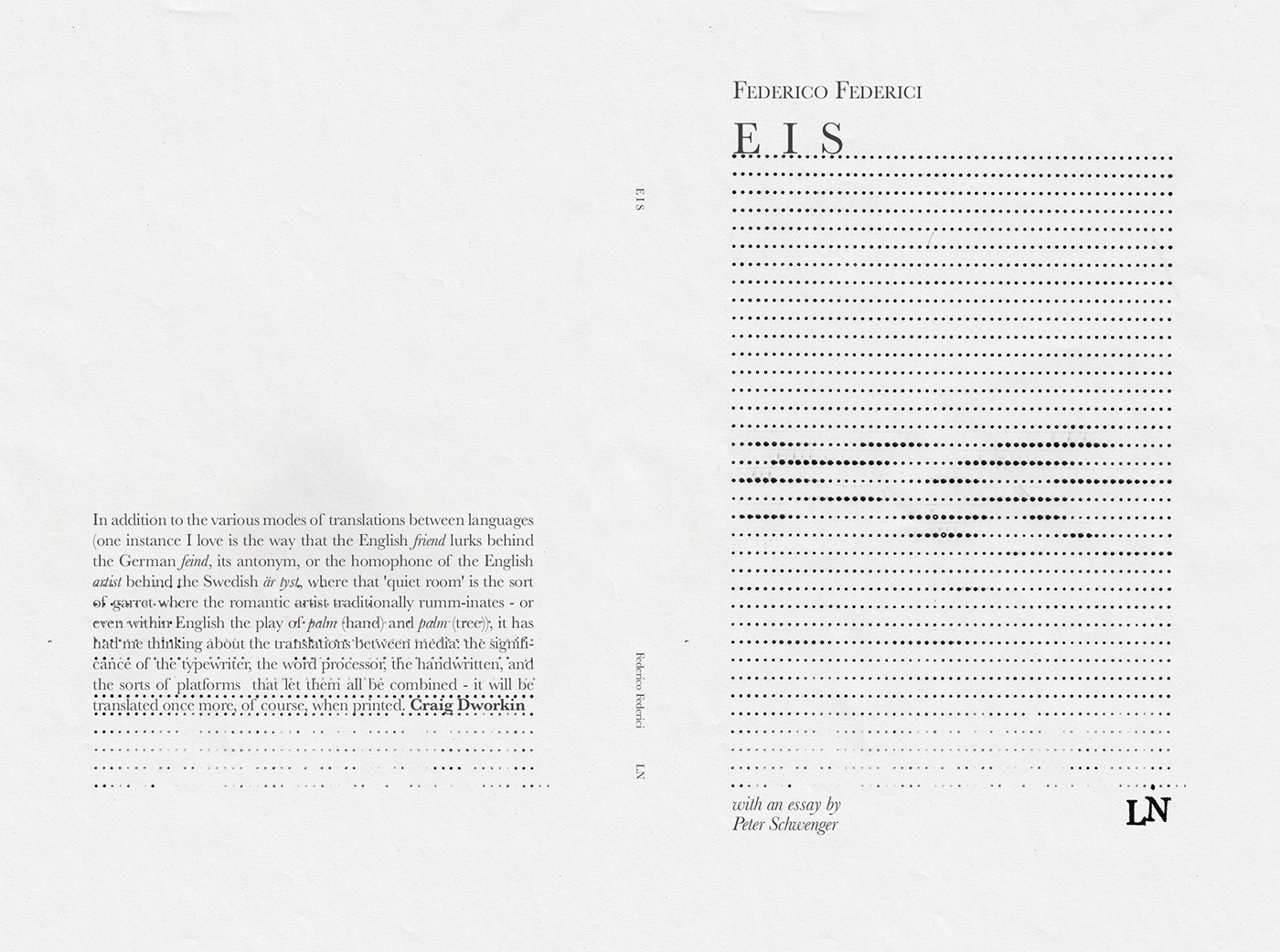
Cover: First attempt of rhyming silence, Federico Federici 2018.
EIS, with an essay by Peter Schwenger, LN 2022, ISBN 979-8831231823 (Paperback), 979-8831204735 (Hardcover) [Eng-Ger-Se]
buy: paperback: amazon.com | .it | .de | .se • hardcover: amazon.com | .it | .de | .se • read: archive • listen: podcast • download: Peter Schwenger
buy: paperback: amazon.com | .it | .de | .se • hardcover: amazon.com | .it | .de | .se • read: archive • listen: podcast • download: Peter Schwenger
recording a glacier
4 contact microphones driven by TASCAM DR-60D

EIS, an essay by Peter Schwenger
«In writing of the night, I really could not, I felt I could not, use words in their ordinary connections. Used that way they do not express how things are in the night, in the different stages – conscious, then semi-conscious, then unconscious.» Interview with James Joyce about Anna Livia Plurabelle, «Harper’s Magazine» (1931), Max Eastman.
This is James Joyce, trying to explain to his friend Max Eastman why he wrote Finnegans Wake the way he did. Federico Federici’s EIS is of course a much more slender work, but there are clear affinities to Joyce’s. Like the ironically titled Wake, it leaves the waking world behind; and what it does with words tries to capture «how they are in the night», specifically in our dreams. It begins with a note in the classic form used in psychoanalytic cases, written in what might be thought of as its classic (i.e. Freudian) language, German: «In der Nacht vom 5. Februar auf den 6. Februar 1974 träumte er» («In the night between the 5th and 6th of February 1974 he dreamed»). Following this is a page that is solidly black on both sides; another such page closes the work. Framed by these visual equivalents of darkest night is a dreamwork whose interior vision, metaphysically and existentially, rivals the darkness that surrounds it. It is a vision that is embodied in words, and obsessed by them.
That words appear in our dreams is undeniable; just how they appear continues to baffle researchers. Something is communicated by, say, a written page in a dream; but if you try to see the actual words, they elude you, for the associations that make dream images so volatile are even more expansive in words. Federici, in his prefatory note, speaks of a "screen" of words; and in what follows we find dense blocks of typing that represent such a screen. In particular, several landscapes are constructed entirely out of words, whose placement corresponds to that of the natural objects and displaces them – as words have always tended to do. This is a technique that was used by Concrete Poetry, and more recently by the asemic artist Xu Bing. It emphasizes the ways that a screen of words stands between us and the world. Upon this screen we project our habitual patterns of perception and meaning, patterns which have been established precisely through words. Now, in the unstable world of dream, the screen begins to crack, like a sheet of ice that is no longer transparent, as language is commonly supposed to be, but covered with a fine web of filiations. One thinks of the branching genealogies that linguists construct to trace the journeys made by linguistic particles from one language to another. Federici makes use of many languages in this work: German, Swedish, English, Latin, Italian, Sanskrit, French, Czech, Russian. These are sometimes translated in footnotes; but translation is less important than transition: that "shifting and sliding" from one language to another, words revealing their arbitrary and unpredictable powers. EIS itself is not only the German word for "ice" but a word that also appears, with different meanings, in Latin, Greek, Portuguese and Danish.
Federici’s preface presents EIS as an experiment – not in the usual sense of "experimental literature" (an unsatisfactory term in my opinion) but as an actual "experiment with sounds [...] recorded with a set of contact microphones." Reflecting Federici’s profession as a physicist, this experimental aspect accounts for the occasional presence of numbers – as in the "Failed" attempt to calculate (pesare il buio) the black hole of a squared page filled with zeros. The sounds being investigated forsake their verbal significations to take shape as music, with words and phrases repeating like motifs. We find explicit musical directions: diminuendo, crescendo, con brio. Indeed, the spaced words with their occasional blocks of dense typing might be read like the player piano rolls of Conlon Nancarrow.
Federici’s poetry, while its words waver in and out of various languages, conveys a meditation on universal themes, arrived at through intense particulars. His style evokes that of T.S. Eliot, another multilingual poet, and at several points the allusions are quite evident. That poetry plays such a large part in this "fissured text", as Federici calls it, is appropriate. For in poetry the branching cracks that are the sign of language’s insufficiency can be read otherwise: as a net with which to attempt the capture of elusive apprehensions.
Still, those apprehensions must inevitably elude us. As in dream, we yield to the experience of this text on terms that are not our own. When we emerge on the waking side of darkness, of the double-sided black page that concludes EIS, we carry with us the bodily sense of a complex and poignant emotion; but we have no words for it. We must content ourselves – as I have here – with describing the surface aspects of the work, knowing that this surface is cracking and shattering even as we observe it.
That words appear in our dreams is undeniable; just how they appear continues to baffle researchers. Something is communicated by, say, a written page in a dream; but if you try to see the actual words, they elude you, for the associations that make dream images so volatile are even more expansive in words. Federici, in his prefatory note, speaks of a "screen" of words; and in what follows we find dense blocks of typing that represent such a screen. In particular, several landscapes are constructed entirely out of words, whose placement corresponds to that of the natural objects and displaces them – as words have always tended to do. This is a technique that was used by Concrete Poetry, and more recently by the asemic artist Xu Bing. It emphasizes the ways that a screen of words stands between us and the world. Upon this screen we project our habitual patterns of perception and meaning, patterns which have been established precisely through words. Now, in the unstable world of dream, the screen begins to crack, like a sheet of ice that is no longer transparent, as language is commonly supposed to be, but covered with a fine web of filiations. One thinks of the branching genealogies that linguists construct to trace the journeys made by linguistic particles from one language to another. Federici makes use of many languages in this work: German, Swedish, English, Latin, Italian, Sanskrit, French, Czech, Russian. These are sometimes translated in footnotes; but translation is less important than transition: that "shifting and sliding" from one language to another, words revealing their arbitrary and unpredictable powers. EIS itself is not only the German word for "ice" but a word that also appears, with different meanings, in Latin, Greek, Portuguese and Danish.
Federici’s preface presents EIS as an experiment – not in the usual sense of "experimental literature" (an unsatisfactory term in my opinion) but as an actual "experiment with sounds [...] recorded with a set of contact microphones." Reflecting Federici’s profession as a physicist, this experimental aspect accounts for the occasional presence of numbers – as in the "Failed" attempt to calculate (pesare il buio) the black hole of a squared page filled with zeros. The sounds being investigated forsake their verbal significations to take shape as music, with words and phrases repeating like motifs. We find explicit musical directions: diminuendo, crescendo, con brio. Indeed, the spaced words with their occasional blocks of dense typing might be read like the player piano rolls of Conlon Nancarrow.
Federici’s poetry, while its words waver in and out of various languages, conveys a meditation on universal themes, arrived at through intense particulars. His style evokes that of T.S. Eliot, another multilingual poet, and at several points the allusions are quite evident. That poetry plays such a large part in this "fissured text", as Federici calls it, is appropriate. For in poetry the branching cracks that are the sign of language’s insufficiency can be read otherwise: as a net with which to attempt the capture of elusive apprehensions.
Still, those apprehensions must inevitably elude us. As in dream, we yield to the experience of this text on terms that are not our own. When we emerge on the waking side of darkness, of the double-sided black page that concludes EIS, we carry with us the bodily sense of a complex and poignant emotion; but we have no words for it. We must content ourselves – as I have here – with describing the surface aspects of the work, knowing that this surface is cracking and shattering even as we observe it.
Peter Schwenger
p.5-6
Blurb
In addition to the various modes of translations between languages (one instance I love is the way that the English friend lurks behind the German feind, its antonym, or the homophone of the English artist behind the Swedish är tyst, where that 'quiet room' is the sort of garret where the romantic artist traditionally rumm-inates - or even within English the play of palm (hand) and palm (tree)), it has had me thinking about the translations between media: the significance of the typewriter, the word processor, the handwritten, and the sorts of platforms that let them all be combined - it will be translated once more, of course, when printed.
Craig Dworkin
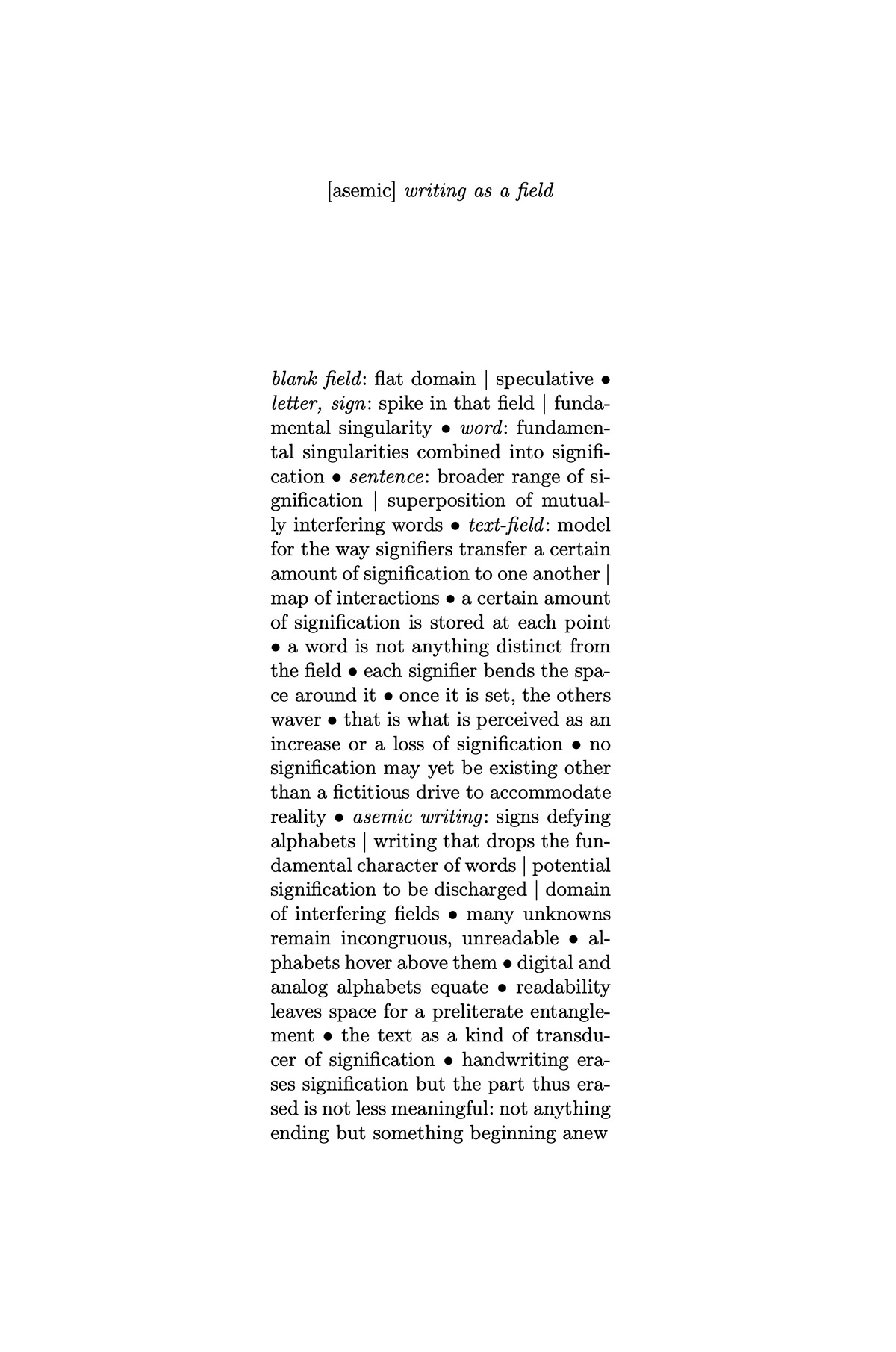
p.12
«There are things
we live among ’and to see them
is to know ourselves’»
Of being numerous (1968), George Oppen.
To most readers, textual experience is supposed to be a straight path through conventional signs, preferably within the frame of a native language. Nevertheless, no language is, in itself, truer or closer to "reality" than any other. Simultaneously writing in different languages, including those apparently obfuscated, results in an undepictable state of the text, hard to be conceived out of the conventional logic.
An inspiring interpretation of this phenomenon may be put forth referring to De Broglie’s duality.
Once the wave-like behaviour is observed, the particle-like one disappears: once är tyst (Swedish) → is silent (English), the silent artist disappears and someone else stands in his place in that silence. The classical idea that only what is expressed in a familiar language can be experienced, and vice versa, is hence uprooted or at least challenged.
Only for the sake of simplicity, English has been chosen as a language of reference, whenever possible.
The surface of the glacier, the most accessible part of it, forms a conglomeration of more or less conscious events and drives a relentless flux of languages. The overall text is far more significant than the strings of words or the expanses of signs it consists of, as much as the dynamics of dreaming preserves the traits of an individual experience, whilst within fixed structures. Any distinction between the languages, as well as any sense of objectivity of their constituents, is worked around.
Either behaviour (wave-like or particle-like) is, in the end, nothing intrinsic.
EIS works as a phenomenon which occurs because fundamental forces come into play. It is set out for the reader to experiment with the text, not to fulfil his expectations or to confront the obsessions of him who writes it.
The plot, in itself irrelevant, does not subsume a univocal experience. The characters are unstable and undergo constant metamorphoses, getting transmuted or annihilated. That involves the languages (German → English → Swedish → German → (...)) and the subjects (I → you → we → I → (...)) likewise.
Pronouns and nouns may be equated with elemental quanta of action, or with exchange carriers within the textual field. The things we live among are knots of a one and only undistinguishable field and to see them is to know that we too belong to it.
Federico Federici
p.13-14
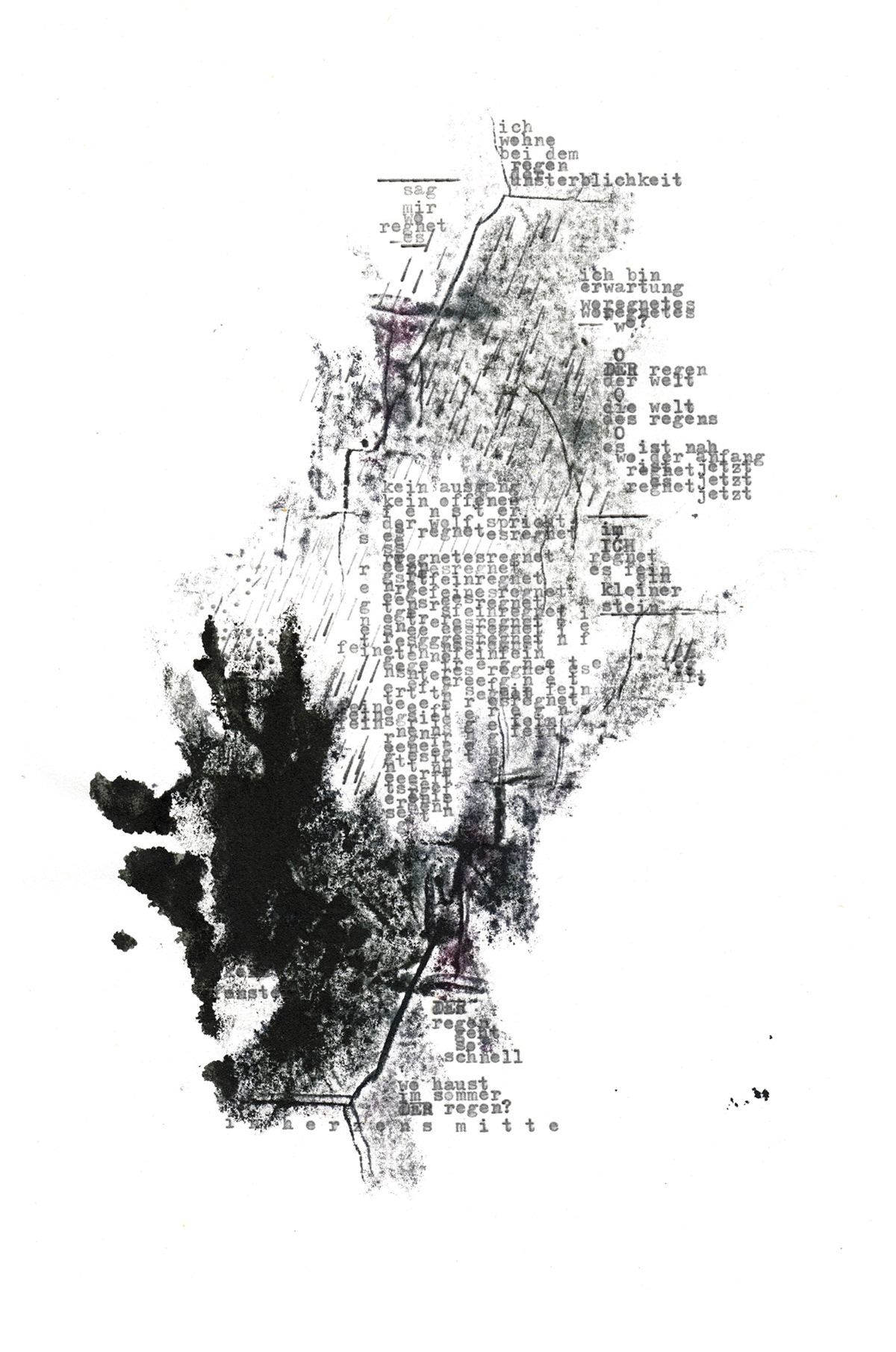
p.19
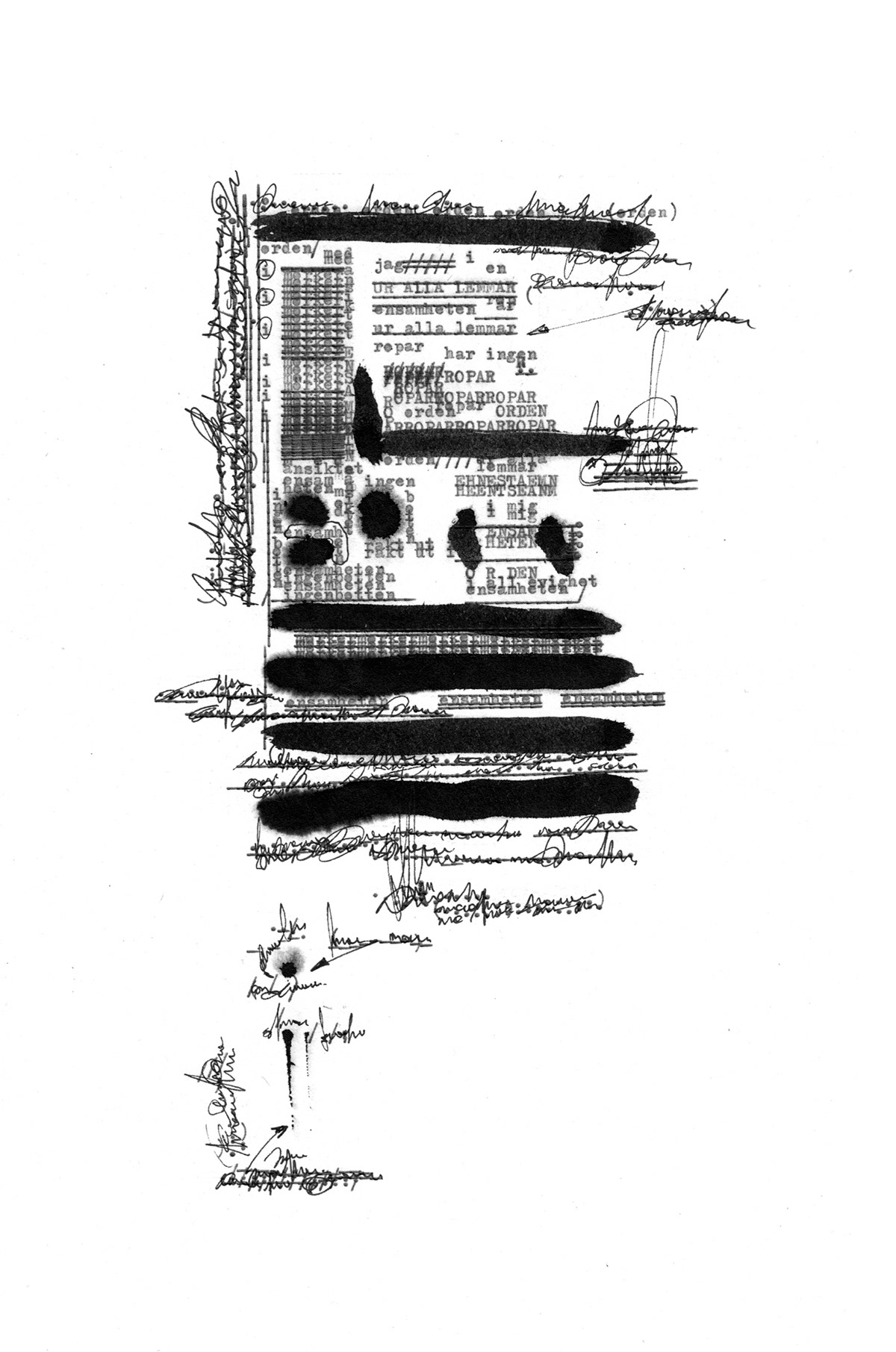
p.20
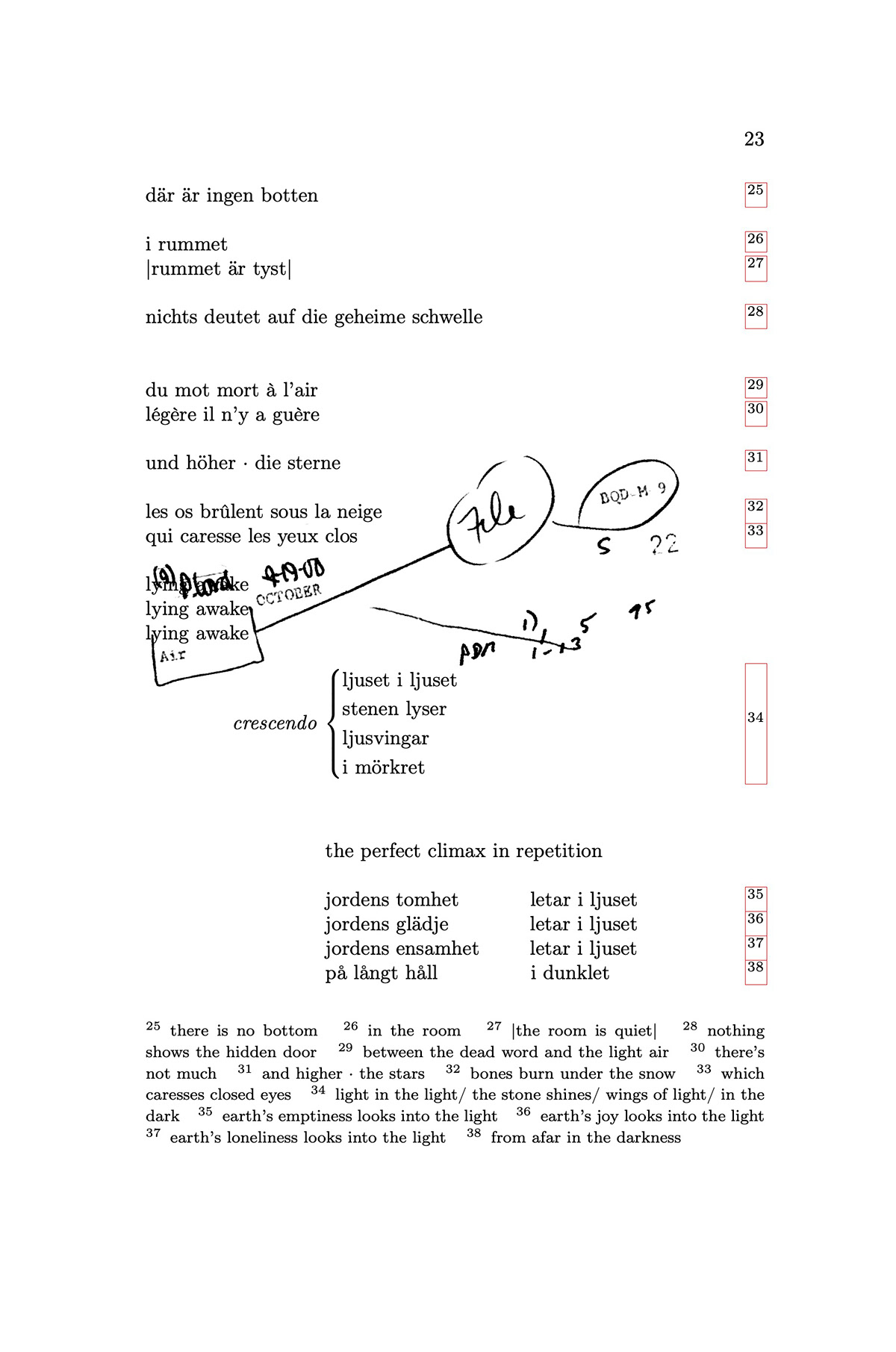
p.23
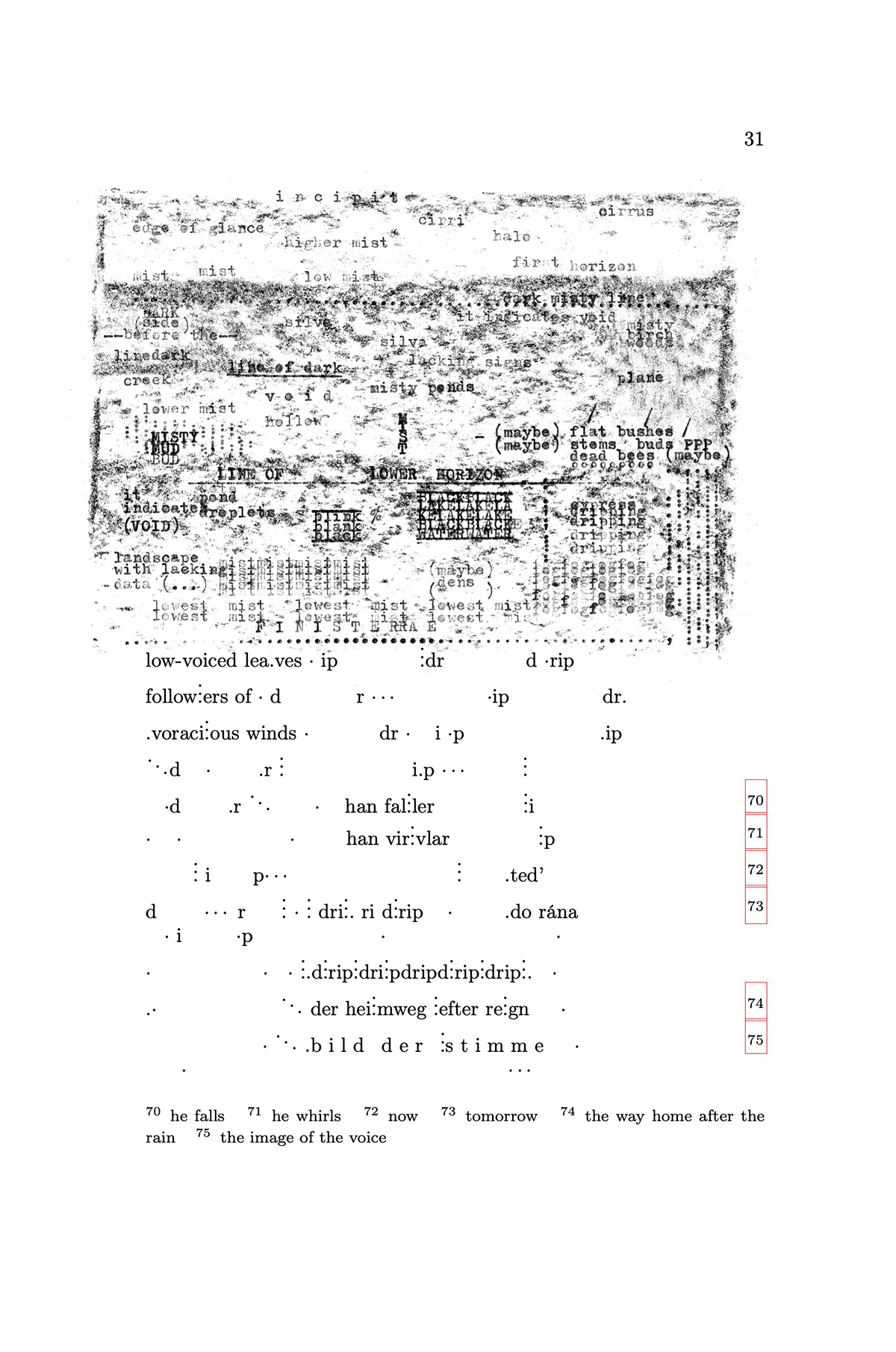
p.31
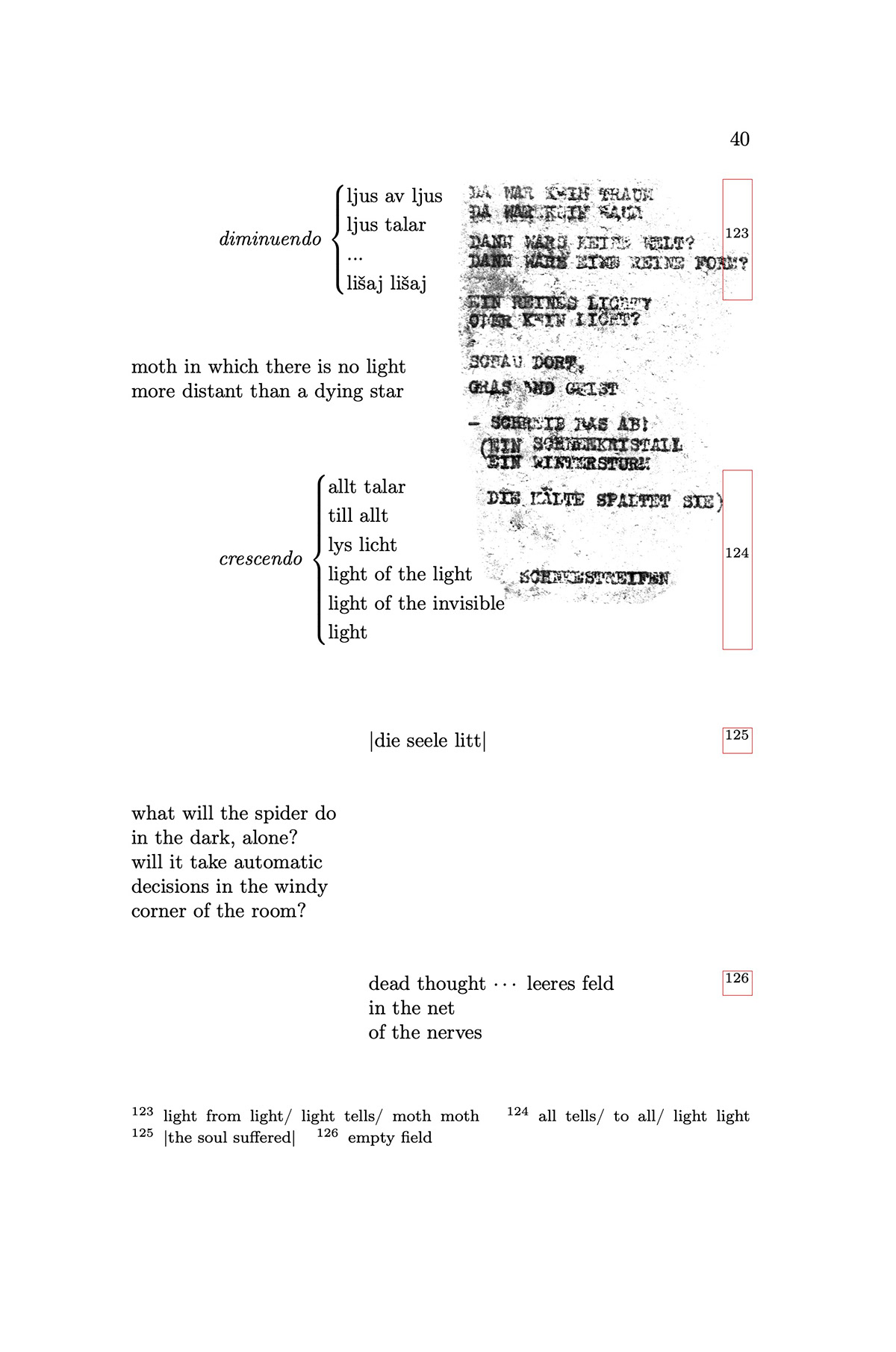
p.40

p.42






A young reader’s guide to melting ice
«Snæfellsjökull’s snowy summit, by an optical illusion not unfrequent in mountains, seemed close to us, and yet how many weary hours it took to reach it! The stones, adhering by no soil or fibrous roots of vegetation, rolled away from under our feet, and rushed down the precipice below with the swiftness of an avalanche.»
Journey to the centre of the Earth, Jules Verne, 1871
Words have properties not entirely specified by the language they belong to. The term to label the frozen water is, for instance, spelled differently across different languages [1] but pronounced fairly the same.
This fact was crucial in the making of EIS, since it suggested a sort of phase diagram of water, whose molecules aggregate differently depending on the conditions of pressure and temperature, while remaining the same. The very name of the glacier (Snæfellsjökull: snow|mountain|glacier) [2] hints at some process of environmental transformation, hence putting forth the idea of the text as a geological phenomenon.
Drawing some parallel between these dynamics and DHTML [3] experiments proves to be rather inspiring. Web pages act as real computational environments wherein digital poems are sited, whose aspect and content may be modified by the scripts potentially triggered by the reader.
In the case of Seattle Drift by Jim Andrew, for instance, the poem initially appears to be in a well arranged formal status, but it suffices to click on the “do the text” link for a dismantling process to be promptly set off. The letters, originally bound together in sentences and words by the strong field of signification, start drifting apart along seemingly random patterns, driven by pseudo-random parameters. The overall process is not handled by grammatical rules in a conventional sense, though. The hence atomized words become clouds of signs expanding, self-organizing into clumps wherein letters preserve some residual activation potential, despite they only exist as isolated elements at this point.
The intrinsic instability of EIS, far from being confined without the text, acts likewise as a nature-triggered code. The kinetics of the glacier, detected through highly sensitive contact microphones in 2010, suggests a variety of unstable forms (melting, collapsing, shifting, accreting and so forth) which are expressed in terms of metastable levels of signification.
The book in itself does not tell the story of the glacier, nor a story at all. The Snæfellsjökull icecap functions as a driving phenomenon, as the perfect environment wherein, or according to which languages undergo transformations like matter does – Literatur als Medium, to slightly rephrase Oliver Jahrhaus.
The fault-fractures between different languages, the crevices in the asemic sheets, the debris of visual poetry are the very sites «whereby anything proceeds from that which is not, into that which is» (Symposium, Plato), not broken or missing links originally pointing to hyper-textual domains.
Provided that a certain degree of abstraction is handled, no level is out of reach for the reader. The verbo-visual tables reorient the text into the dynamics of the glacier, disrupting language expectations. The textual elements get hence aggregated in different forms, like water does in its different states.
To borrow a seminal word from The time of digital poetry: from object to event by N. Katherine Hayles, EIS attempts to possibly ‘eventilize’ the icecap as an ongoing diffused phenomenon, taking advantage of the intrinsic nature of asemic writing as an open trajectory in the domain of space and time, without strict boundary conditions.
The text is conceived to work as the glacier does, to follow its dynamics across the natural languages, against the inertia of the print one. The text is the glacier and the glacier is the text in the flickering play of materiality. The online appendices put forth an approach more connected to this idea of a book as a process. While not being part of an interactive device in the hands of the reader, each page is not a stable surface, but a place to be constantly reactivated.
Rough ice slabs exhibit different optical properties, turning to be more or less opaque or reflective under different angles. Similarly, at the surface of the page, the text may obfuscate itself. Hence, the use of ever sparser alphabetic signs seem to present hidden data rather than explicitly referring to them.
Switching between languages, never as sharp or predictable as in a two-state system (1/0, ↑/↓ and so forth), gets sometimes stuck in asemic blocks. The latter, far from being a vague «area of resistance to meaning» (Rhetoric of the Image, Roland Barthes), tend to set themselves as an analog interface within the digital structure of the alphabets, working around the agglutination of symbols which signification consists of. Such parts do not prove to be weaker, though. Ice and water coexist: some ice melts, some water freezes. The glacier as the paradigm of writing, insofar as silence is that of music in John Cage’s 4’33”.
The bare task of reading no longer suffices, but can the writer ultimately know the state of the text and, if so, what does that imply?
Writing usually implies to set up pretty everything in the mind of the reader, hence gaining some direct impact on his experience, matching a strong sense of reality with literature. Asemic writing adds a further level.
Let |A> be the native language, |B> a familiar one, |C> a less known one, |D> asemic writing. In this space, and in the most abstract and general terms, the experience of the text |T> could be depicted, with a slight abuse of notation, as some superposition |T>=α|A>+β|B>+γ|C>+δ|D> which represents just a possibility for the text to become meaningful.
Quite an obvious question is whether this unpredictability is intentional and how it has to be dealt with. In particular, the asemic component appears to be subject to rather broad interpretations, making a de facto univocal signification unavailable.
While |A>, |B> and |C> are not mutually orthogonal, for any text might, with slightly different nuances, be expressed in any language, |D> seems to depend on hidden variables.
Writing ‘prepares’ the text into some configuration which, when presented to the reader, will collapse into something beforehand unknown, from that which may be not into that which is, to rephrase Plato again. The text stands in itself as an installation, wherein reading becomes a somewhat free experimental practice, complementary to writing, not one implicitly ruled by it.
Federico Federici
[1] German: Eis; English: ice; Swedish: is; Icelandic: ís.
[2] snæ → snær (Peterson, Lena: Nordiskt runnamnslexikon, Uppsala 2007), snjǣr (Falk, Hjalmar / Torp, Alf: Etymologisk ordbok over det norske og det danske sprog, Oslo, 1903): snow, Old Norse; fell: mountain, Icelandic; jökull: glacier, Icelandic.
[3] Dynamic HTML allows scripting languages to change the variables in a web page’s code, thus affecting the way it looks and works after it has been fully loaded.
p.53-56
T O C




